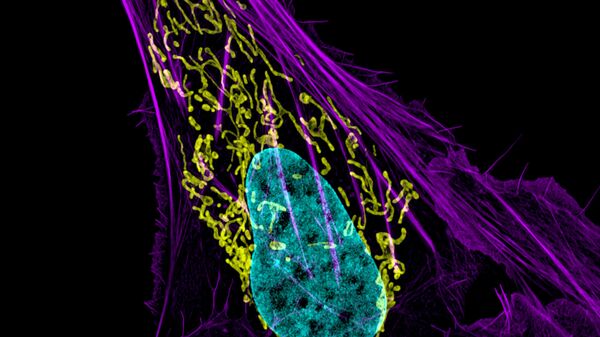We are continuing our foray into the wondrous world of genetic engineering and potential improvements it may have for us – humans. Cloning and stem cell research aside, there is another interesting technique that may become widespread in the future – but for now it's mostly limited to lab experiments.
Gene therapy is, essentially, what it sounds like – a procedure which uses genes in order to prevent or treat a disease. The theory is straightforward enough – a patient with a disease comes it, the doctors insert a gene which would render the disease harmless into the patient's genome, the patient is eventually cured. Of course, practice is much more complicated than theory. Doctor Jennifer Kuzma, co-director of the Genetic Engineering in Society Center at North Carolina State University says:
Gene therapy has been advancing with the development of different delivery mechanisms into the human body of genes that can treat disease and in some cases the delivery in the past has used viral sequences. And there were some problems with that in the late 1980s and early 1990s, continuing on until maybe 10 years ago when they advanced the methodology for delivering genes into the human body.
The idea is that it's possible to do one of the following: replace a mutated gene – the one which causes the disease – with the proper gene; inactivate the mutated gene which makes the organism act improperly; or introduce an altogether new gene into the organism, which would then fight the disease. So what are the problems that the researchers ran into? Well, like any experimental treatment, gene therapy did not promise concrete results. However, the worst-case scenario happened in 1999, with the death of Jesse Gelsinger, the first person who died in a gene therapy clinical trial – at least, the first person to be publicly identified.
His case was interesting, as he was diagnosed with OTC deficiency, a medical condition which is generally an X-chromosome linked genetic disease, fatal at birth – but apparently his case was the result of a spontaneous genetic mutation which happened after conception, thus he was only partially affected. September 13, 1999, he was injected with the corrected gene through a viral vector. Four days later he died, as his body produced to a massive immune response to the modified virus carrying the correct gene. The investigation which followed the death ruled that scientists broke several rules, such as Gelsinger having high ammonia levels which should have excluded him from the trial, not disclosing death of monkeys given similar treatment and not reporting prior cases of serious side effects of other patients. Overall, this incident pushed back research and acceptance of the technique.
Theodore Friedmann, one of the pioneers of gene therapy, noted that while the prospects of gene therapy are seem amazing, it's dangerous to build heightened expectations.
“Hope is necessary, but knowingly making undeliverable promises and raising false hope is cruel. The delusion of a cure contributed to crashing disappointment later.”
But, as time goes on, technology and science improves. After becoming one of three recipients of the 2015 Japan Prize, an award honoring scientists whose “original and outstanding achievements in science and technology have advanced the frontiers of knowledge and served the cause of peace and prosperity for mankind,” Friedmann said:
“Technology has gotten better. New kinds of viruses, such as the lentiviruses (a more efficient and safer gene delivery vector) were created. Disease models expanded. The science got more rigorous.”
As far as real-life applications, gene therapy is still out of reach for the most of – if anything, due to overwhelming costs associated with it. For example, gene therapy drug Glybera costs $1.6 million per patient.

